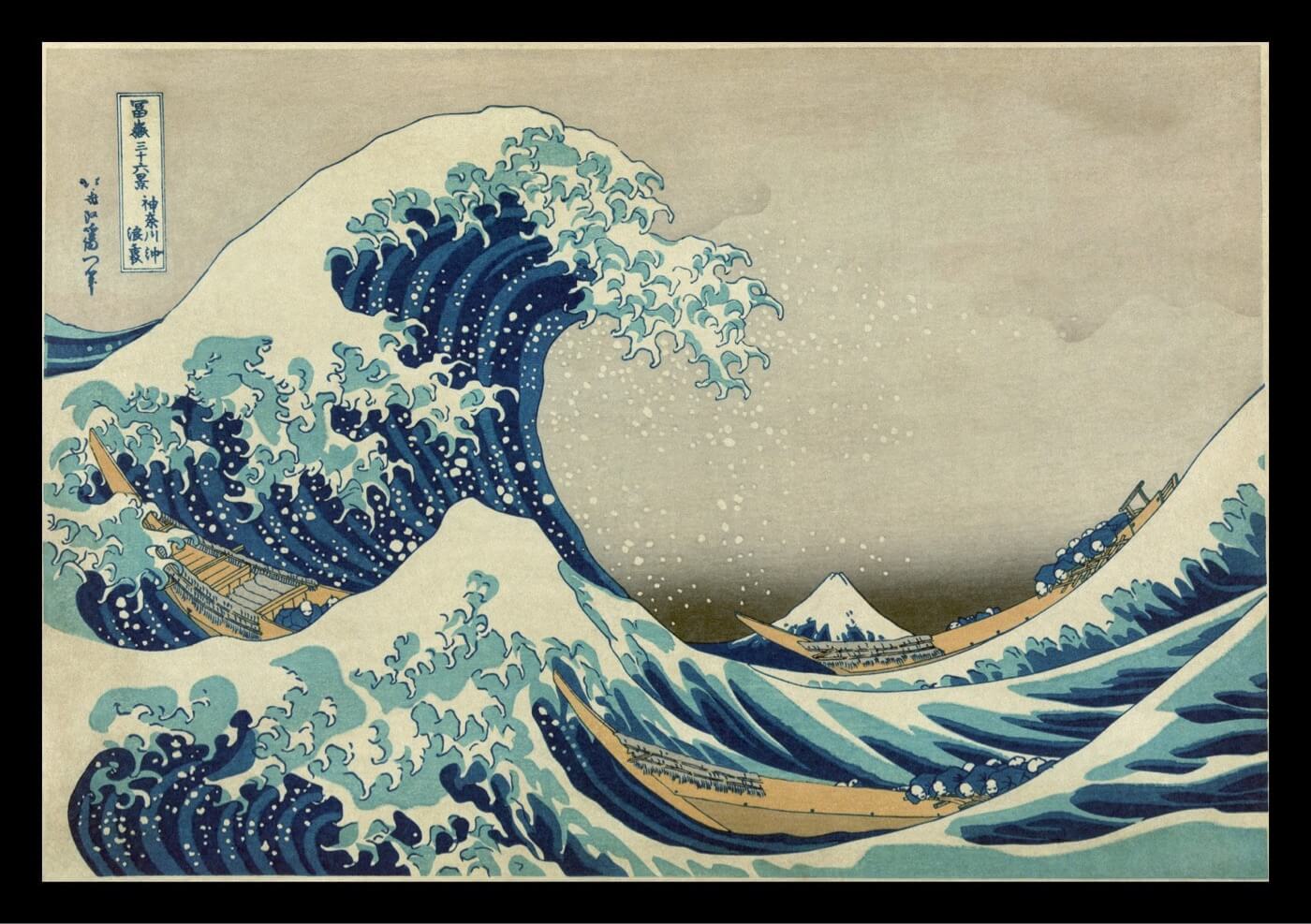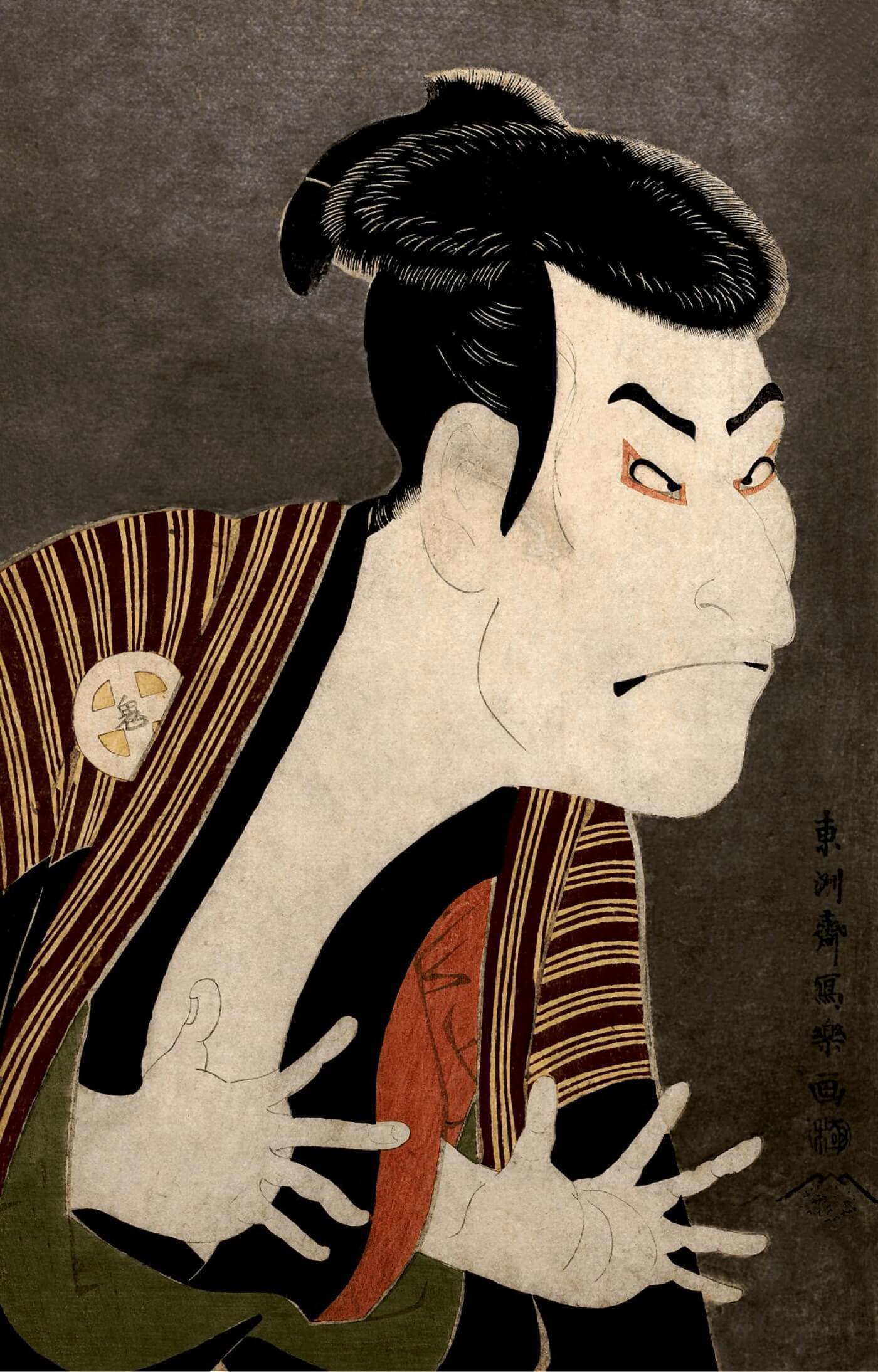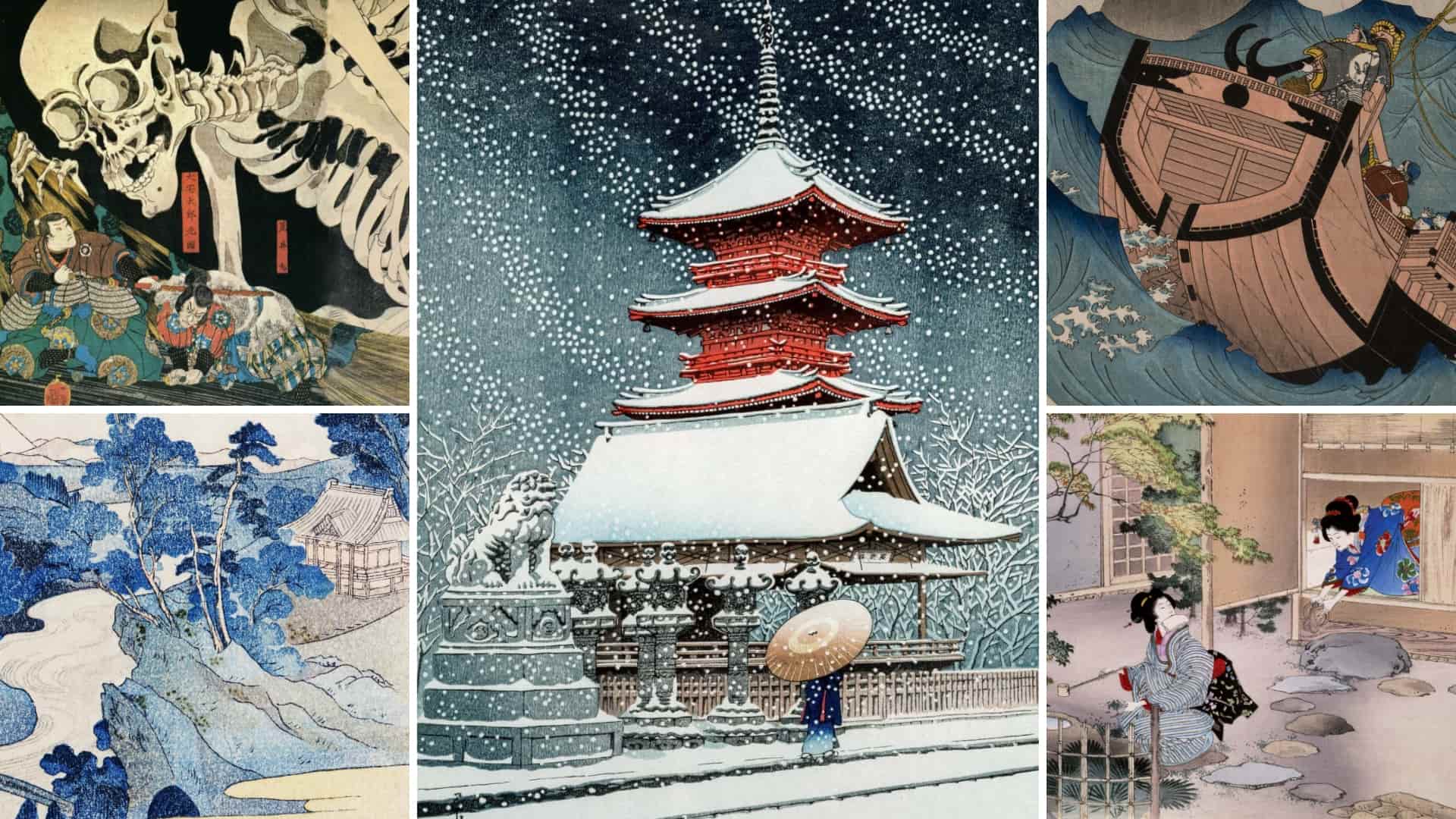Ukiyo-e was one of the most influential movements in all 0f Eastern art – but what is ukiyo-e? We’re going to explore ukiyo-e art by breaking down its definition – and by looking at some famous examples from Katsushika Hokusai, Kitagawa Utamaro, and more. By the end, you’ll know what ukiyo-e is and why it’s so important.
Ukiyo-e Artworks
The meaning of ukiyo-e
Ukiyo-e changed the style – and production process – of Japanese art when it was popularized in the 17th century. Here’s quick video on the major points of ukiyo-e from Jackson Kliewer:
What is Ukiyo-e? • Ukiyo-e Explained by Jackson Kliewer
Now that we’ve reviewed some of the major conceptual aspects of the term, let’s formally define ukiyo-e. For more, check out our index of art styles covering more specific and noteworthy movements.
UKIYO E ART DEFINITION
What is ukiyo-e?
Ukiyo-e is a Japanese art form that was popularized in the 17th century and circulated widely through the 19th century. Ukiyo-e art which translates to English as “pictures from the floating world,” often focuses on the hedonistic aspect of Japanese life during the Edo period, and the beauty of the country’s natural landscapes.
Practitioners of Ukiyo-e
- Hanmoto – Publisher
- Eshi – Artist
- Horishi – Woodblock Carver
- Surishi – Printer
Ukiyo-e History Explained
Breaking down the history of ukiyo-e
Ukiyo-e rose to prominence in the 17th century for a lot of reasons; here are some of the most prominent: the unification of Japan under the Tokugawa Shogunate, the development of urban centers, the “walling off” of pleasure centers in cities, and the mass-distribution of woodprints.
Sound confusing? It’s a lot – let’s break down those points in further detail.
THE UNIFICATION OF JAPAN UNDER THE TOKUGAWA SHOGUNATE
From 1467-1573, Japan was stuck in a cycle of civil war. This period of Japanese history is known as the Sengoku period – and it was essentially a mess; lots of battles, not a lot of art.
In 1573, Oda Nobunaga, a Daimyo (feudal lord) from the Oda Clan, launched a campaign to unite Japan under a single banner. Nobunaga was incredibly successful, but he died before the nation’s unification was complete.
His ally Tokugawa Ieyasu completed the unification by leading the feudal forces from the East over Ishida Mitsunari’s forces from the West in the Battle of Sekigahara.
This video from “Kings and Generals” breaks down the Battle of Sekigahara and why it was so important.
What is Ukiyo-e? • Background Info via the Battle of Sekigahara Documentary by Kings and Generals
Why was the unification of Japan under the Tokugawa Shogunate important for ukiyo-e? Well, it gave Japan the chance to focus on art rather than war. It also helped to transform the nation’s infrastructure from a feudal to a merchant system.
THE DEVELOPMENT OF URBAN CENTERS
After Tokugawa Ieyasu unified Japan under the Shogunate government, he moved the country’s capital to Edo (modern day Tokyo). Edo served as a symbol for the rapid urbanization of Japan.
For more on Edo (and its unique magnificence), check out this short video from Slice.
What is Ukiyo-e? • Background Info via Edo, the Ancient Green City of Japan by Slice
Edo was founded on the ecological principles of Japanese culture: observation, integration, and cultivation of flora and fauna. It was a beautiful metropolis; rich with animals and gardens. But it was also a breeding ground for the arts.
So: why was the development of urban centers important for ukiyo-e? Because it set up a place for ukiyo-e to be produced and distributed.
THE WALLING OFF OF PLEASURE CENTERS
Sex was an important aspect of Japanese life during the Edo period. In urban centers such as Edo, there were two major types of entertainment workers: prostitutes and geisha; there were differences between the classes of prostitutes and geisha.
But for the sake of the focus of this article, we’ll stick to those categories.
This next video from Asia Society looks at how the world of Edo was designed for pleasure, and how it was communicated in ukiyo-e.
Ukiyo-E History • The World of Edo by Asia Society
It can be difficult to comprehend the tranquility of the pleasure quarters through a contemporary lens – but it was certainly there. Pleasure quarters were about more than sex – they were about sensuality, shared experiences, and the burgeoning of new artistic forms: in theater (kabuki), in poetry (haikai), painting and wood-carving (ukiyo-e).
So: why was the walling off of pleasure centers important for ukiyo-e? Because it served as the place of inspiration for many ukiyo-e artists.
MASS DISTRIBUTION OF WOODBLOCK PRINTS
The mass distribution capability of woodblock prints was perhaps the most notable catalyst for the explosion of ukiyo-e. Woodblock prints allowed ukiyo e artists to circulate their creations without needing to start from scratch each time. They simply needed to apply the print to the woodblock and add paint.
If you’re interested in the woodblock printmaking process, check out the video from Art Gallery NSW below.
Modern Ukiyo-e • Ukiyo-e Woodblock Printmaking with Keizaburo Matsuzaki by Art Gallery NSW
So: why was the mass distribution of woodblock prints important for ukiyo-e? Because it meant ukiyo-e art was easier to produce, which lowered the purchase cost, which meant more people could afford it; resulting in an explosion of art through urban centers.
Ukiyo-e Paintings and Prints
Exploring famous ukiyo-e prints
Here are a few of the most famous ukiyo-e prints from the Edo period.
THE GREAT WAVE OFF KANAGAWA
The Great Wave off Kanagawa from Hokusai's 36 Views of Mount Fuji is undoubtedly the most famous ukiyo-e woodblock print.
Ukiyo e Artists • The Great Wave off Kanagawa by Hokusai, 1831
Hokusai is regarded as a master of ukiyo-e art – and his series 36 Views of Mount Fuji is considered essential study material for students of the craft.
ŌTANI ONIJI III as YAKKO EDOBEI
Tōshūsai Sharaku drew a wide array of actors from Kabuki theater, but perhaps none were as iconic as Ōtani Oniji III as Yakko Edobei in The Colored Reins of a Loving Wife.

Ukiyo-e Paintings • The Colored Reins of a Loving Wife by Tōshūsai Sharaku
Kabuki actors were celebrities of their era – which made them perfect subjects for ukiyo-e art.
TWO BEAUTIES WITH BAMBOO
Kitagawa Utamaro is one of the most famous and influential ukiyo-e artists of all-time – and there’s no doubt about it: his 1795 print Two Beauties with Bamboo is a masterwork of the form.Utamaro produced a lot of ukiyo-e woodprints that depicted female subjects; most were popular in Japan, some were popular in Europe too.
Ukiyo-e Landscape Art
Analyzing the legacy of ukiyo-e
The legacy of ukiyo-e lives on in manga, anime, painting styles, and woodblock printmaking. Art historians credit ukiyo-e as an integral part of Eastern art and culture. For more on the philosophy of aesthetics in Eastern culture, check out this video from Michael Saba.
What is Ukiyo-E? • Philosophy of Aesthetics and The Floating World of Ukiyo-e by Michael Saba
The setting of the floating world has become a fixture in science-fiction movies like Star Wars, Blade Runner, and Castle in the Sky.
And the painting style of ukiyo-e has almost certainly inspired the works of Japanese maestros such as Hayao Miyazaki in Spirited Away and Isao Takahata in Tales of the Princess Kaguya.
UP NEXT
Explore More Styles and Movements
This was just one of many fascinating segments of art history. There are many eras, styles, artists, and movements to discover. Let's continue our study by choosing the next stop on your way to becoming an art aficionado. Below you can visit our Art Styles Index, our Art History Timeline, or choose an individual movement.
Showcase your vision with elegant shot lists and storyboards.
Create robust and customizable shot lists. Upload images to make storyboards and slideshows.
